The city-builder Manor Lords excels on the Steam Deck with its detailed atmosphere and complex gameplay, if you follow these settings.
Developed by solo developer Greg Styczeń, the city builder and strategy game Manor Lords has garnered attention for its historical accuracy, amazing atmosphere, and intricate gameplay mechanics. As a mediaeval Lord, you'll be tasked with growing a small village into a bustling city while managing resources and leading your troops into some (thankfully, totally optional) battles.
Its recent Early Access release has already amassed a significant following, quickly becoming one of Steam's top releases of the year.
Many might think a strategy game like Manor Lords wouldn't translate well to a handheld like the Steam Deck due to the complex inputs usually required for city-building and tactical gameplay. RTS games are, after all, typically designed for mouse and keyboard. But even this is something Valve took care of with Steam Input.
We'll examine the game's performance on Steam Deck and share some optimised settings and learn a few tricks for getting the most out of the controller options. Let's dive in!
Manor Lords: Performance on Steam Deck
To ensure your mediaeval city thrives without performance issues, I played the game for many hours exclusively on the Steam Deck to determine the best settings and specific frame rate targets. These findings and recommendations should keep your digital fiefdom running smoother than a freshly thatched roof.
The usual suspects of a massive performance tradeoff are Shader Quality, Shadow Quality, and Foliage Quality. Unfortunately, these are also the settings that alter Manor Lords's overall image quality the most — so it's important to find the right balance here. As you can see, Shader Quality mainly affects the complexity of models and textures, but it has a profound impact on how good the game can look:
'High' seems like the best compromise here, as 'Ultra' only costs us additional FPS without significantly improving the image quality. 'Medium' looks noticeably worse, so we'll stick to 'High' and try to gain some headroom through other means.
As in nearly every game, Shadow Quality is also a candidate which doesn't go unnoticed. Setting it to 'High' comes at a price of 3-5 FPS. Still, in my humble opinion, it's more than worth it, as lowering the Shadow Quality not only degrades the shadow clarity itself but also lets fewer and fewer objects cast any shadows at all.
Foliage Quality, on the other hand, is a tricky thing: While 'Low' turns whole segments of a forest into a weird army of cardboard trees, 'Medium' takes the camera angle and distance a bit more into account, but results in ugly pop-in you can't get rid of, depending on the current perspective:
So again, I'd recommend setting Foliage Quality to 'High'. Thankfully, we can free up some rendering leeway by setting both Grass Density and Grass Distance to 'Medium'. These come, again, at different costs, varying on the current camera angle and height. That way, mediaeval mother nature looks more than fine on your Steam Deck.
Feel free to judge the scaling of the grass options yourself:
While all of these elements are subject to the View Distance setting, the performance impact, luckily, remains manageable. At 800p, 'Medium' still seems perfectly fine, as the added objects and detail over distance barely impact Manor Lords' image quality throughout gameplay.
One thing to mention is that the distance between the camera and the ground, as well as the view's general direction, brutally affects performance. When closer to the ground, you can expect to lose 5-10 FPS momentarily. The same applies to auto-saving and some minor hiccups of the background simulation. There's practically no way to work around these issues, but you can at least keep the camera height in mind to mitigate regular FPS dips a fair bit.
After discussing that, it's time to look at the available upscaling techniques!
Intel to the Rescue? Yes, Milord
The game's upscalers are part of the Anti-Aliasing setting: Off, FXAA, TAA, FSR, and XESS. Aside from the first two (which we will ignore for the sake of FPS), they all mark techniques to either achieve better image clarity or gain additional performance headroom by rendering the game's base resolution lower than the one you're playing on right now, but then spatially upscaling it through different approaches.
If you're an avid reader of our Overkill performance reviews, you know that AMD's FSR usually gives the best performance but results in hardly ignorable noise, while Intel's XESS lately became more or less the new underdog: a slightly worse performance but vastly superior image quality due to the lack of fuzzy upscaling artefacts around objects and during movement.
As you can see above, the same applies to Manor Lords. Yet again, we're seeing the best overall performance stability and frame rate with FSR set to 'Quality'. But the game truly lives off of its tremendous atmosphere, in which the visuals play a huge part. When we opt for XESS, we'll enjoy increased image clarity at the cost of a few frames per second.
As we're covering a somewhat laid-back city builder, and not an intense shooter or action game, I think it's a worthwhile tradeoff. Taking all our findings into account, the game looks great when utilising XESS, and a target frame rate of 40FPS (at 80Hz on an OLED Deck) is more than manageable:
Best Settings for Manor Lords Early Access on Steam Deck
Combining all comparisons and tweaks, you'll easily achieve more than enjoyable frame pacing, especially on an OLED Steam Deck. That being said, you can freely decide if you want to apply a 30FPS cap instead to minimise hiccups further and gain additional battery life.
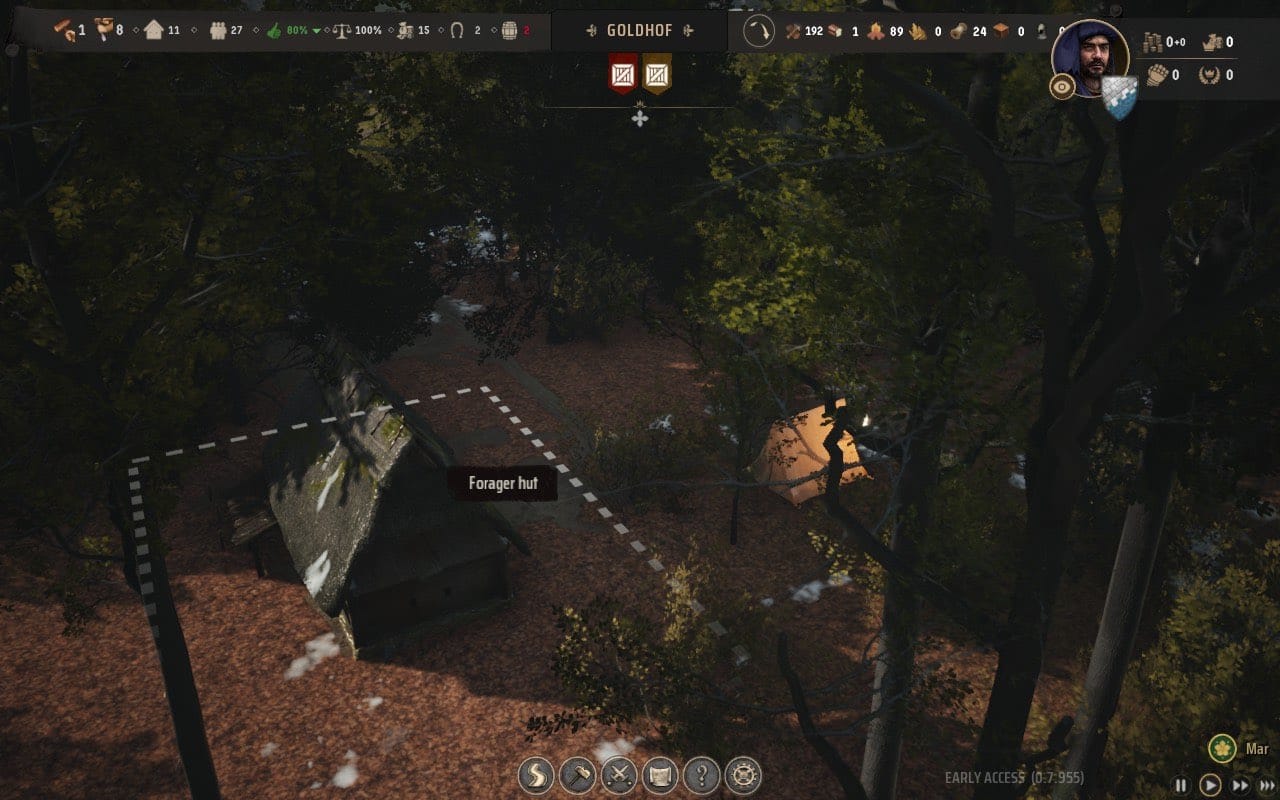
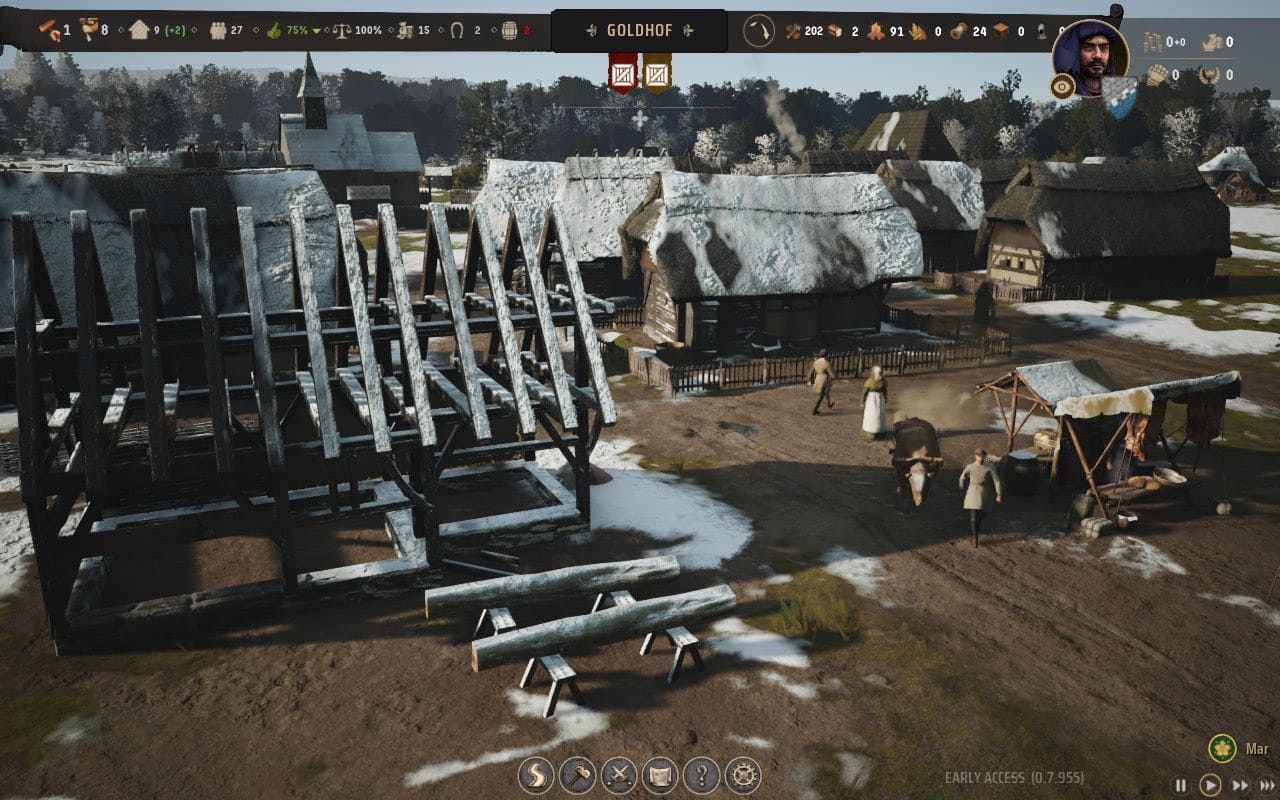
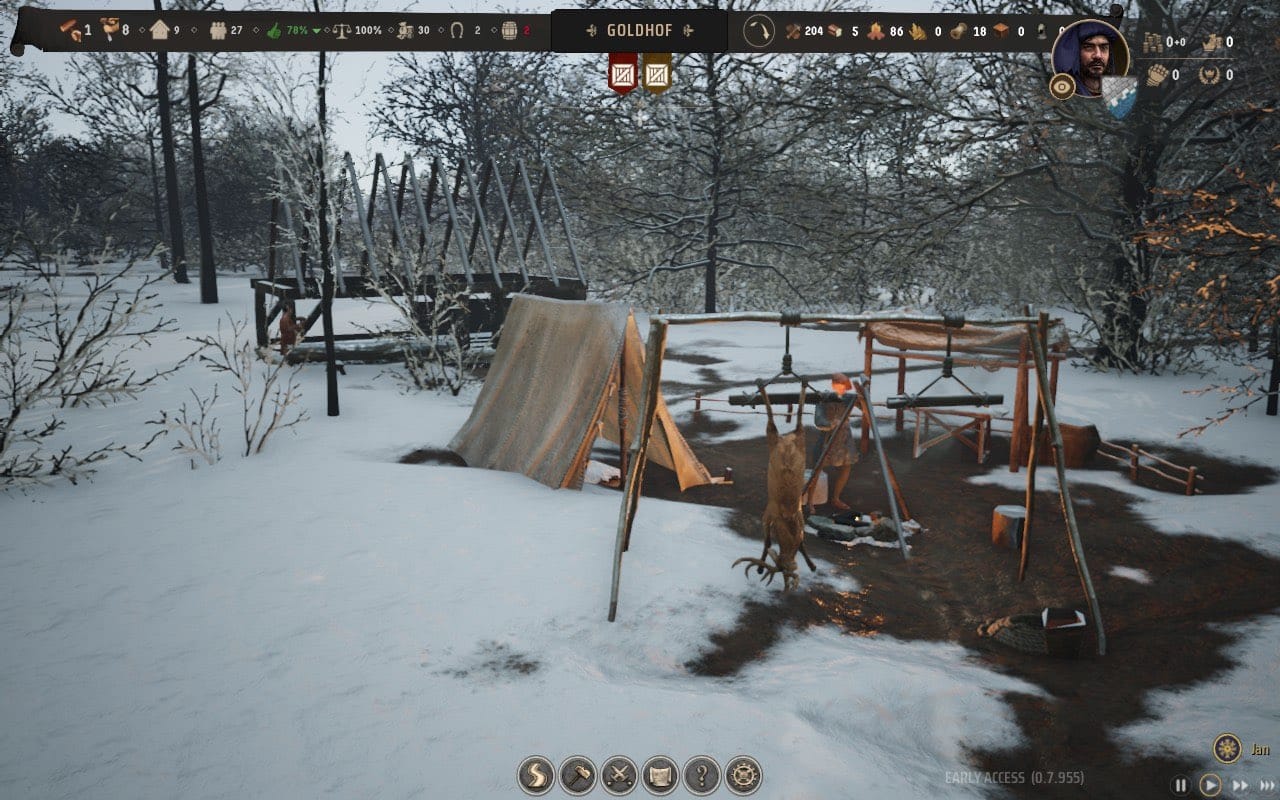
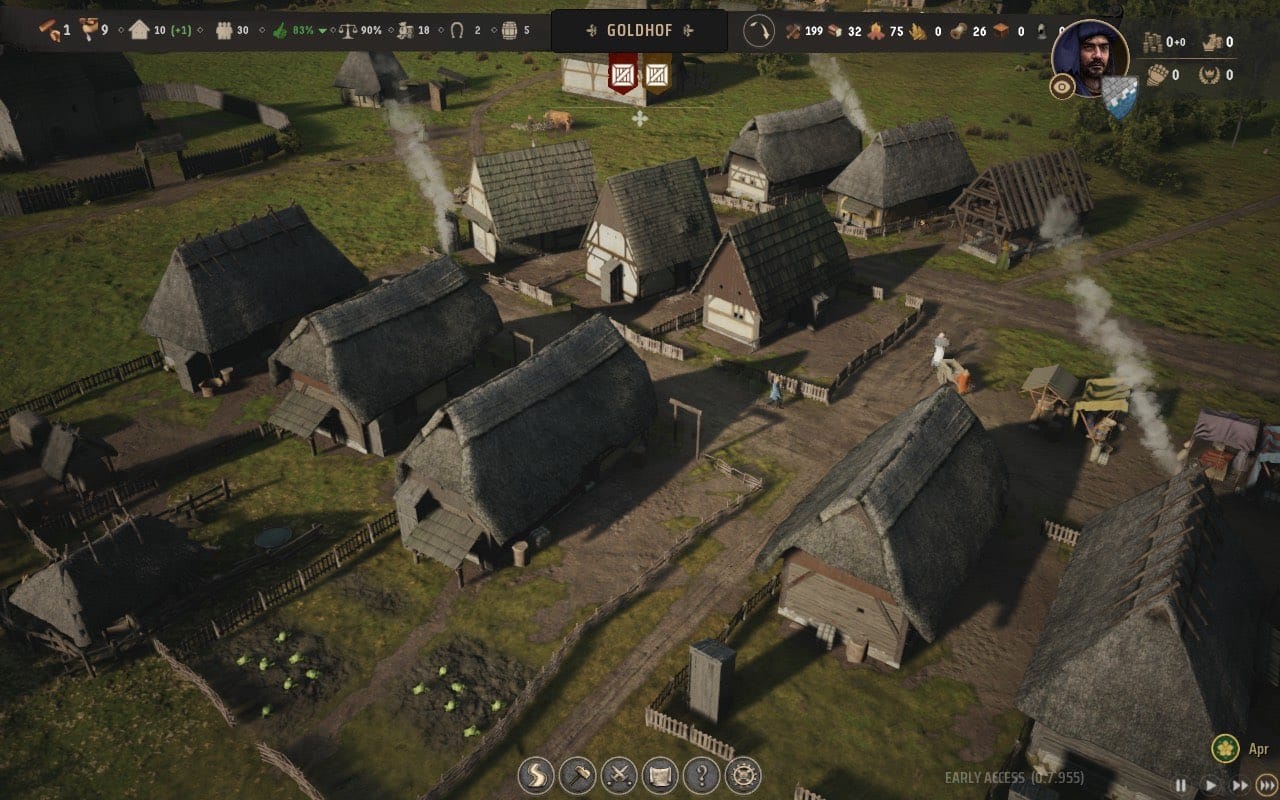
Otherwise, the following optimised settings will give you a playtime of around two hours while maintaining great image quality on Valve's handheld:
| In-Game Settings (Graphics) | |
|---|---|
| Resolution | 1280x800 |
| Anti-aliasing | XESS |
| XeSS quality | QUALITY |
| VSync | OFF |
| Max framerate | UNLIMITED |
| Sharpening | OFF/MEDIUM |
| Shader quality | HIGH |
| Shadow quality | HIGH |
| Postprocess quality | HIGH |
| Bounced Light approximation | OFF/MEDIUM |
| Volumetric clouds | OFF |
| Terrain texture resolution | HIGH |
| View distance | HIGH |
| Grass density | MEDIUM |
| Grass distance | MEDIUM |
| Foliage quality | HIGH |
| Quick Action Menu | |
|---|---|
| Use per-game profile | ON |
| Frame Limit | 30/40 FPS |
| Disable Frame Limit | OFF |
| Half Rate Shading | OFF |
Controller Tweaks for a Strategy Game
There's one last thing to take a brief look at: As mentioned earlier, playing an RTS on the Steam Deck can be challenging, as this genre is often catered towards mouse and keyboard inputs. Thankfully, after trying many different tweaks and controller layouts, I came across a perfectly working community preset.
Head into the game's controller settings and search for the following layout via the Community Layouts tab:
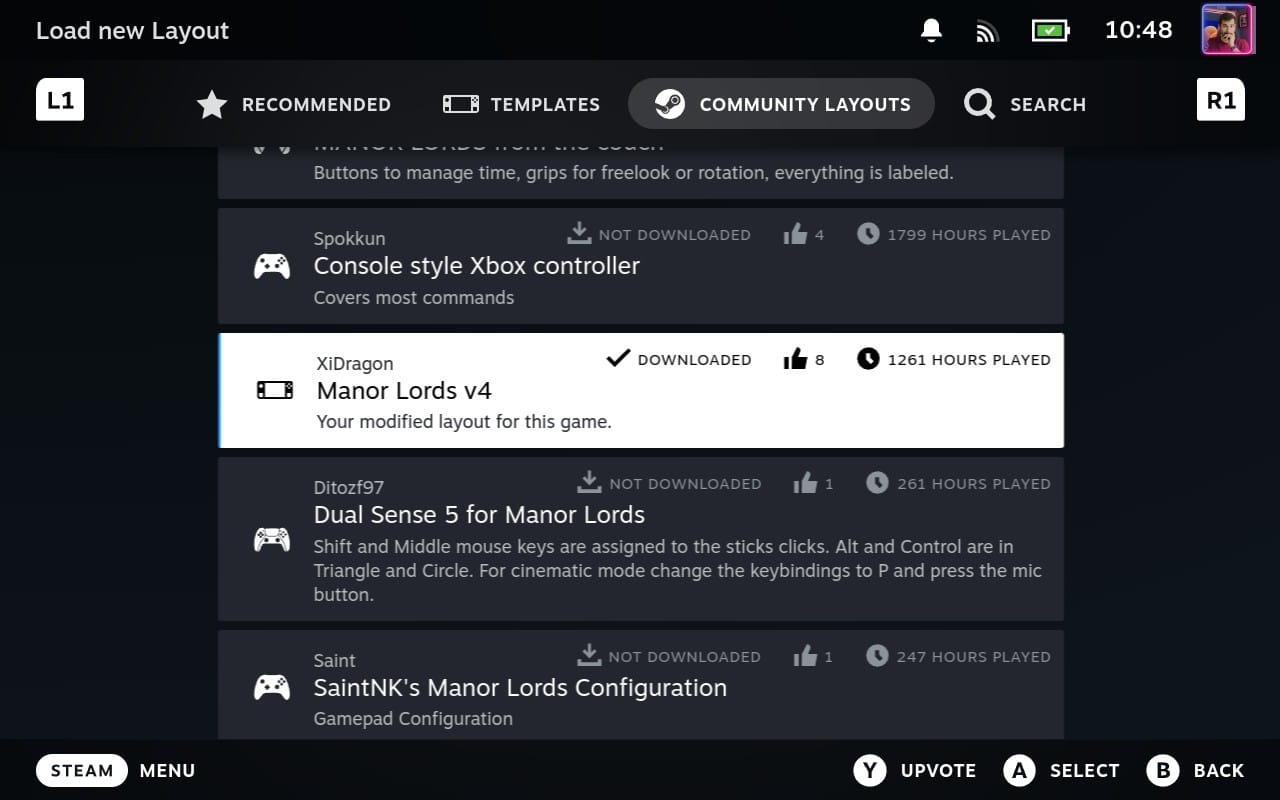
After being applied, this layout lets you use all of the Steam Deck's input capabilities: the right trackpad as a mouse, both joysticks as fine-tuned camera controls (height, rotation, etc.), and all other buttons (both front and rear) for the most used functions in Manor Lords. The creative community is definitely one of the biggest reasons to love what Valve is building with the platform.




